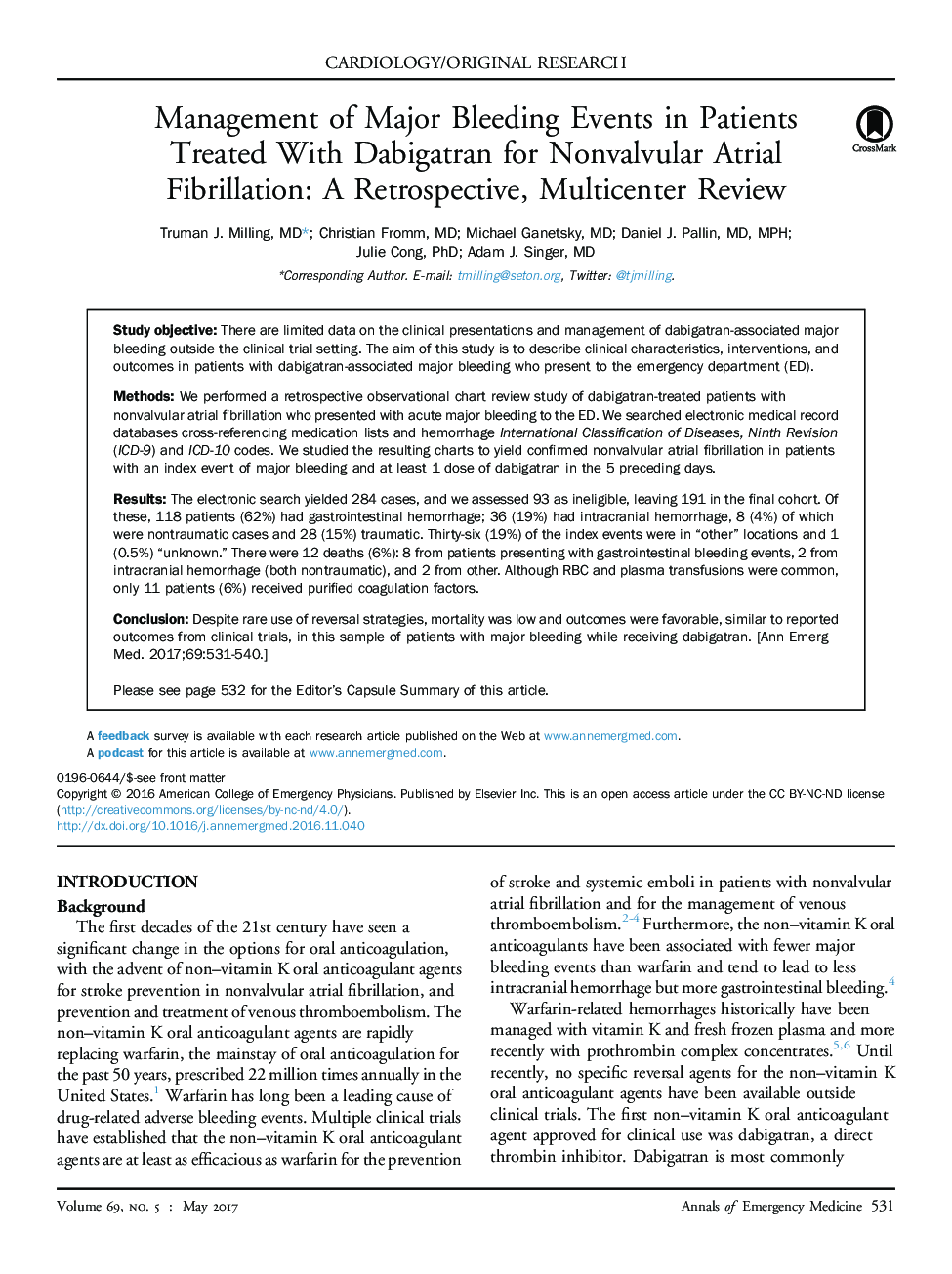| Article ID | Journal | Published Year | Pages | File Type |
|---|---|---|---|---|
| 5651615 | Annals of Emergency Medicine | 2017 | 10 Pages |
Study objectiveThere are limited data on the clinical presentations and management of dabigatran-associated major bleeding outside the clinical trial setting. The aim of this study is to describe clinical characteristics, interventions, and outcomes in patients with dabigatran-associated major bleeding who present to the emergency department (ED).MethodsWe performed a retrospective observational chart review study of dabigatran-treated patients with nonvalvular atrial fibrillation who presented with acute major bleeding to the ED. We searched electronic medical record databases cross-referencing medication lists and hemorrhage International Classification of Diseases, Ninth Revision (ICD-9) and ICD-10 codes. We studied the resulting charts to yield confirmed nonvalvular atrial fibrillation in patients with an index event of major bleeding and at least 1 dose of dabigatran in the 5 preceding days.ResultsThe electronic search yielded 284 cases, and we assessed 93 as ineligible, leaving 191 in the final cohort. Of these, 118 patients (62%) had gastrointestinal hemorrhage; 36 (19%) had intracranial hemorrhage, 8 (4%) of which were nontraumatic cases and 28 (15%) traumatic. Thirty-six (19%) of the index events were in “other” locations and 1 (0.5%) “unknown.” There were 12 deaths (6%): 8 from patients presenting with gastrointestinal bleeding events, 2 from intracranial hemorrhage (both nontraumatic), and 2 from other. Although RBC and plasma transfusions were common, only 11 patients (6%) received purified coagulation factors.ConclusionDespite rare use of reversal strategies, mortality was low and outcomes were favorable, similar to reported outcomes from clinical trials, in this sample of patients with major bleeding while receiving dabigatran.
